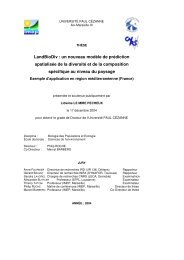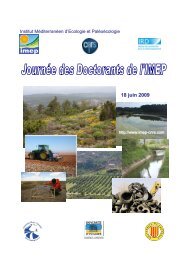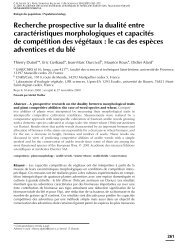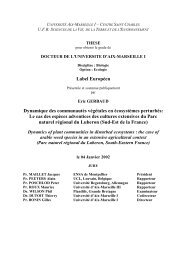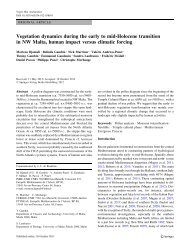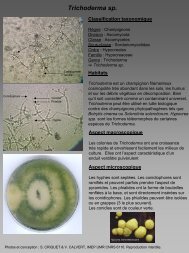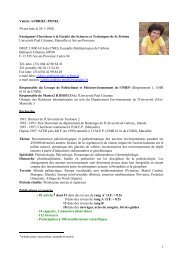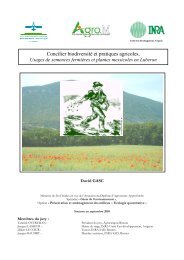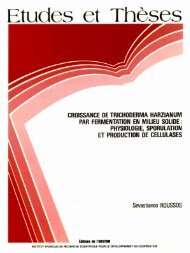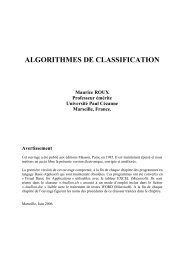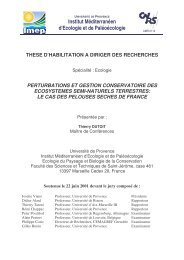UNIVERSITÉ PAUL CÉZANNE, AIX MARSEILLE III - IMEP
UNIVERSITÉ PAUL CÉZANNE, AIX MARSEILLE III - IMEP
UNIVERSITÉ PAUL CÉZANNE, AIX MARSEILLE III - IMEP
Create successful ePaper yourself
Turn your PDF publications into a flip-book with our unique Google optimized e-Paper software.
Résultats et discussion. Chapitre 3: Evaluation des facteurs de croissance<br />
2.5.3. 13 C-nuclear magnetic resonance ( 13 C-NMR) analysis<br />
Freeze-dried samples were used directly in NMR experiments without special<br />
preparation. Owing to their size, the samples were gently ground (IKA Labortechnik,<br />
Germany) in order to fill the rotor. Solid-state 13 C CPMAS NMR spectra were obtained on a<br />
Bruker Avance-400 MHz spectrometer (Bruker, Bremen, Germany) operating at a 13 C<br />
resonance frequency of 100.7 MHz. Samples were placed in a 7-mm zirconium rotor and spun<br />
at the magic-angle at 6 kHz. All measurements were made at room temperature. The 13 C<br />
chemical shifts were referred to tetramethylsilane and calibrated with the glycine carbonyl<br />
signal, set at 172.5 ppm. Deconvolution of the NMR spectra was performed using the DmFit<br />
software (Massiot et al., 2002). This software adjusts the spectra to obtain the line width and<br />
the peak positions (in ppm) and to integrate each peak so as to obtain the percentage of each<br />
contribution. The deconvolution and determination of different measurements were performed<br />
as reported previously.<br />
3. Results<br />
3.1. Physico-chemical characterisation of substrates<br />
The physical and chemical characteristics of the three substrates are presented in Table<br />
5. The pH of all the three substrates was between 5.45 and 4.9 for OTL and OMW<br />
respectively. While nitrogen content was the same for all substrates (0.82±0.1 %), the C/N<br />
ratio was different for all substrate and OTL presented the lowest value (54.07±2.12) followed<br />
by OC and OMW (60.11± 3.24 and 63.2±0.65 respectively). Statistical analysis (P=0.05)<br />
showed no significant difference in carbohydrate and lignin content were observed for OMW<br />
and OC but significant difference for OTL which presented the highest carbohydrate content<br />
(68.64±2.68 %) and lowest lignin content (16.87±1.86 %).<br />
97



